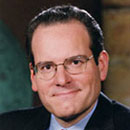Fate of endangered Chicago historic buildings still hangs in the balance as feds weigh security needs
Published in Business News
CHICAGO — Historic preservationists thought their demands had been answered this summer when the federal government appeared to green-light the rehab of the two century-old office towers it’s owned on State Street for nearly two decades. But security restrictions governing how the buildings are used going forward have raised questions about the future of the structures.
The groups had fought for years to save the Century and Consumers buildings at 202 and 220 S. State St., both rare surviving examples of the Chicago School of Architecture that had been at risk of demolition.
Preservationists say the buildings might be successfully redeveloped as apartments, affordable housing or a hotel, bringing life back to a long-dead section of State Street.
But the U.S. General Services Administration, which manages the properties, has placed security protocols and restrictions on the buildings that could bar those uses.
Preservationists worry the protocols, which are in response to security concerns raised by judges and other employees at the nearby Dirksen U.S. Courthouse, could pave the way for the government to raze the buildings after all.
“Since the beginning they have had these security requirements that pretty much make it impossible to do any redevelopment,” said Michael Edwards, CEO of the Chicago Loop Alliance. “The unfortunate part is GSA has owned these buildings, which are critically important to State Street, for years and left them empty and rotting. They have not been a good landlord.”
After initially planning to demolish the buildings, the GSA relented over the summer and endorsed their adaptive reuse. But when the agency issued a request for qualifications from interested developers in November, the document laid out more than a dozen security protocols, including a prohibition of projects that would bring permanent and temporary residents into the building. Other restrictions prohibit a rooftop deck, parking and windows directly across from the courthouse. Security concerns involving the courthouse scuttled redevelopment of the site once before.
Chief Judge Virginia Kendall of the U.S. District Court said a multitude of federal law enforcement agencies, including the FBI and U.S. Marshals Service, endorsed the creation of a security buffer zone around the Dirksen building in the wake of attacks such as the bombing of Oklahoma City’s Alfred P. Murrah Federal Building in 1995.
“There isn’t another federal courthouse that doesn’t have a security buffer zone,” said Kendall, who has worked in the Dirksen building since 1990. “We don’t want to be another Oklahoma City.”
But the security requirements outlined in the November request for qualifications contained a loophole. The government said in the document that it might accept proposals that don’t follow all the security protocols as long as the developer can “mitigate the security risks in a manner acceptable to GSA.”
GSA spokesperson Amina Brock said preference will be given to proposals that meet the security criteria without deviations, but that development proposals could include apartments or a hotel.
The development community is so far not shying away from the challenge. A pre-bid meeting held on Dec. 5 attracted a crowd of builders, preservationists, architects and engineers, including some from Related Midwest and DL3 Realty, both noted developers of mixed-use and multifamily properties.
“The room was just jam-packed with people,” said Ward Miller, president of Preservation Chicago, the nonprofit that helped lead a yearslong fight to save the historic structures and will pursue its own redevelopment scheme. “There were about 100 to 120 individuals that showed up, representing a variety of companies.”
If a developer can propose a solution acceptable to the GSA and the federal judges, and attract the necessary financing, it would put a final halt to GSA’s previous plan, to demolish the buildings in favor of a landscaped plaza on the courthouse’s east side, leaving a big gap on State Street.
But it may not be easy.
“It’s going to be a very delicate financial transaction,” said Chicago architect Dirk Lohan, whose grandfather, architect Ludwig Mies van der Rohe, designed the Dirksen building located just to the west at 219 S. Dearborn St.
That’s partly because the feds will retain ownership of the properties, while the hired developer shells out millions to repair the white-glazed terra cotta exteriors, refurbish the lobbies, reconstruct the old office interiors and sign a lease with the government.
“You pay for these improvements, which will be very expensive, and then won’t actually own what you’ve spent all this money on,” said Lohan, who attended the Dec. 5 meeting. “It’s very early in the game, but that tells me maybe they think this won’t work and they will have to tear them down eventually.”
The 21-story Consumers Building, completed in 1913 and designed by the historic Chicago firm of Jenney, Mundie & Jensen, includes a rare surviving example of an early 20th century office building entry, decorated with marble and bronze. The 16-story Century Building was completed in 1916 and designed by Holabird & Roche. Both use the steel-frame design made famous by the era’s Chicago architects, which allowed ever-taller skyscrapers to include huge windows, flooding interior offices with light.
“The early skyscrapers were perfected in Chicago, and these two buildings are symbols of that perfection,” said Miller, who compares the pair to State Street’s Reliance Building three blocks to the north, completed in 1895 and now an upscale hotel.
Edwards points out that tens of thousands of people now call downtown Chicago home, along with thousands of college students from many local universities, so demand exists for new downtown units, especially affordable ones. And the Consumers and Century buildings each have relatively small floor plates and lots of natural light, essential features for any residential use.
“We could return these buildings to the tax rolls and they could also be a great affordable housing project that is much needed,” he said.
Federal officials were also spooked in 2004 when law enforcement arrested a man, later convicted, who they said was plotting to blow up the Dirksen building. The government bought the State Street complex soon after. An early plan, later ditched, called for its transformation into new federal offices.
A 2017 plan would have redeveloped the buildings into a mixed-use apartment complex, but it was later canceled by former Mayor Lori Lightfoot, who said objections from federal judges, who worried the apartment windows would be directly across from their chambers, made it impossible to launch the $141 million project. And in early 2022, Congress set aside $52 million to pay for demolition, an earmark supported by U.S. Sen. Dick Durbin.
The cancellation of the 2017 redevelopment plan still gnaws at Edwards, who points out that other buildings, such as the Monadnock Building at 53 W. Jackson Blvd., are also close to the federal buildings.
“They had it all worked out until the judges said no,” he said. “It’s ridiculous to think they can protect this campus by tearing down these two buildings.”
Preservation Chicago and other advocates fought to save the buildings, successfully pressuring the Commission on Chicago Landmarks to recommend in January that the City Council make them city landmarks. Miller’s group also placed the State Street complex atop its annual list of most endangered buildings for three years in a row and launched an online petition that garnered tens of thousands of signatures.
“In our opinion, the GSA, the judges and the decision-makers probably didn’t realize how important these buildings are to State Street,” Miller said.
Thomas Bruton, the clerk of court for the Northern District of Illinois, said other towers in the vicinity, typically offices, present less risk than would private apartments or hotel rooms 50 to 60 feet away in the State Street buildings, and it’s not just a concern of judges.
“It’s all the federal law enforcement agencies that have reviewed this,” he said. “There are also thousands of people coming through this building every day, so the idea that we’re just trying to protect judges is wrong. Keeping a secure building for the public where the rule of law plays out is really important.”
Preservation Chicago is part of a development team, including architects, engineers and finance experts, proposing a national archive center in the State Street complex, a solution that, unlike apartments or a hotel, could meet all the GSA’s security protocols, Miller said.
The group garnered interest from about 20 religious organizations, including spiritual orders and the Episcopal Church, looking for a central location for their historical archives, paintings, sculptures and other art works. Miller envisions a research center for universities, classrooms, a ground-floor museum showcasing the art collections, and a possible future home for the archives of other Chicago-based organizations such as Ebony and Jet magazines.
“Wouldn’t it be great to have that?” Miller asked. “If there is a better proposal out there that would save these buildings, well, that’s what Preservation Chicago is all about, but we think an archive center could be an amazing resource for Chicago.”
The State Street site’s location near train lines and quick access to Chicago’s airports makes it ideal, as many archives are now scattered and difficult to access, said Christopher Allison, director of the McGreal Center for Dominican Historical Studies at Dominican University in suburban River Forest.
“In the Catholic community there is this huge issue of where to put the archives,” he said. “There are some orphaned collections around the country that need somewhere to go. The need is so great; everyone is on the lookout.”
Some religious organizations have deep pockets, including substantial endowments for record maintenance, and that could help finance the venture, Allison added.
But whether it’s enough for such a huge project is still unknown, Miller said. He hopes the city and federal government can provide more assistance to whomever is chosen, including extending the Loop’s tax increment financing district one block to the east so it takes in State Street, or allowing the $52 million earmarked for demolition work to instead be used for building repairs and rehab.
“If there is a proposal that fits and is acceptable, then the (demolition) funds should be used to repair the buildings,” he said. “Especially the terra cotta exteriors considering that a lot of that damage occurred during the years when GSA owned these buildings.”
“The appropriated funds are authorized for demolition of the properties and cannot be used for rehabilitation purposes,” Brock said. “Congress would have to authorize a change to the appropriation’s purpose.”
Durbin’s office did not return messages seeking comment.
Preservation Chicago’s proposed archive center does have several advantages, said Sean Ahrens, a Chicago-based building security expert. Although it might be possible to provide federal workers with adequate security even if apartments go up on State Street, perhaps by strengthening both the courthouse and apartment windows, the archive can simply block out the windows facing the Dirksen building.
And apartment dwellers or hotel guests would likely consider the strict access control demanded by the feds bothersome, but a research center would have much lower foot traffic and find it easier to screen visitors.
“They would know everyone coming in, so it’s definitely a way to get a higher level of control and could potentially be attractive to the GSA,” he said.
The GSA will accept initial proposals until Jan. 31 and could choose a development team by next summer.
Lohan said he’s interested in helping to develop a proposal, likely residential, that also creates a secure environment for the court.
“That seems to me to be the best way to go,” he said. “I will certainly spend some time on it and hopefully come up with a solution.”
©2024 Chicago Tribune. Visit at chicagotribune.com. Distributed by Tribune Content Agency, LLC.












Comments